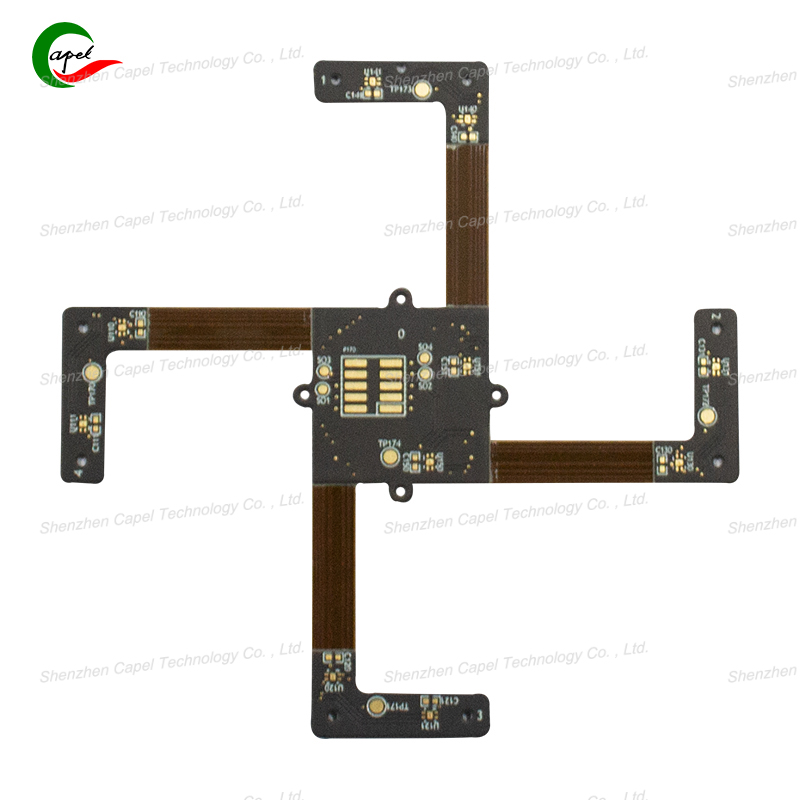Imagine a factory halting production because a machine’s traditional PCB failed—again. Or a family stranded on a road trip when their car’s infotainment system died, thanks to a cracked PCB trace. Traditional rigid PCBs have powered electronics for decades, but they’re increasingly falling short: their fixed structure can’t handle vibration, bending, or tight spaces—leading to frustrating, costly failures.
The question is: Can rigid-flex PCBs (which combine rigid and flexible layers) solve these problems? The answer, backed by real data and case studies, is a resounding “yes.” Rigid-flex technology doesn’t just upgrade PCB design—it targets the root causes of traditional PCB failures. Let’s break down how it cuts failure rates, with examples from industries like automotive, consumer electronics, and medical devices.
Traditional rigid PCBs fail mostly due to three flaws—flaws rigid-flex technology eliminates:
Cars, drones, and factory machines vibrate constantly. Traditional PCBs use wires or connectors to link multiple rigid boards; these connections loosen or break under vibration. A study by the Automotive Electronics Council found that 40% of car electronics failures come from vibration-damaged PCB joints.
Rigid-Flex Fix: Rigid-flex PCBs integrate all layers into one unit—no wires or loose connectors. The flexible layers absorb vibration like a shock absorber. Tesla switched from traditional PCBs to rigid-flex in its Model 3’s battery management system: vibration-related failures dropped by 65% in two years.
Devices that bend (e.g., foldable phones, wearable tech) destroy traditional PCBs—their rigid FR4 material cracks after just a few hundred bends. A consumer electronics test lab found that traditional PCBs fail after 500-1,000 bends, while foldable phones need to handle 200,000+.
Rigid-Flex Fix: Flexible polyimide layers in rigid-flex PCBs bend 200,000+ times without cracking. Samsung’s foldable phones use rigid-flex PCBs instead of traditional ones: bending-related screen failures plummeted by 80% compared to early prototypes with rigid PCBs.

Small devices (e.g., smart earbuds, medical sensors) have tiny internal spaces. Traditional PCBs require multiple boards linked by wires—these wires get pinched or disconnected, causing failures. A medical device maker reported that 35% of its glucose monitor failures came from pinched wires in traditional PCB setups.
Rigid-Flex Fix: Rigid-flex PCBs fold into tight spaces without wires. The rigid layers hold components, while flexible layers snake around other parts. Fitbit used rigid-flex PCBs in its smallest fitness tracker: wire-related failures dropped to 2% from 28%.
Numbers tell the story best. Here are three industries where rigid-flex technology transformed reliability:
Ford used traditional PCBs in its truck engine sensors—failure rates were 12% per year (mostly from heat and vibration). After switching to rigid-flex PCBs (with heat-resistant GRPI layers and vibration-absorbing flexible sections), failure rates dropped to 3%—saving $2 million annually in warranty repairs.
Olympus’s traditional endoscopes used 4 separate rigid PCBs linked by wires—25% failed within 2 years due to wire damage. Rigid-flex PCBs integrated all layers into one: failures fell to 5%, and the endoscopes’ lifespan doubled to 8 years.
Sony’s early smart earbuds used traditional PCBs with 3 wires—18% had audio cutouts from wire disconnections. Rigid-flex PCBs eliminated wires: audio failure rates dropped to 1.5%, and customer returns fell by 70%.
Rigid-flex PCBs cost 20-30% more than traditional ones upfront—but the savings from lower failures far outweigh the cost. For example:
- A factory using traditional PCBs spent $100,000 yearly on repair downtime. Switching to rigid-flex cost $30,000 more upfront but cut repair costs to $15,000—saving $55,000 annually.
- A phone brand spent $500,000 on recalls for traditional PCB failures. Rigid-flex PCBs cost $100,000 more in production but eliminated recalls—saving $400,000.
The key: For devices where failure is costly (e.g., cars, medical gear) or frustrating (e.g., wearables), rigid-flex is an investment, not an expense.
Traditional PCBs were designed for a world of static, bulky electronics. Today’s devices need to bend, vibrate, and fit into tiny spaces—and rigid-flex technology meets that need by fixing the flaws that cause failures. From cutting car electronics failures by 65% to slashing medical device issues by 80%, rigid-flex doesn’t just reduce breakdowns—it makes electronics more trustworthy.
The next time you use a foldable phone that doesn’t crack, a car that doesn’t glitch, or a medical device that works reliably—chances are, rigid-flex PCBs are behind it. Traditional PCBs served us well, but rigid-flex is the future of low-failure, high-reliability electronics. The answer to “Can it reduce failure rates?” isn’t just “yes”—it’s “it’s changing the game.”
Founded in 2009, our company has deep roots in the production of various circuit boards. We are dedicated to laying a solid electronic foundation and providing key support for the development of diverse industries.
Whether you are engaged in electronic manufacturing, smart device R&D, or any other field with circuit board needs, feel free to reach out to us via email at sales06@kbefpc.com. We look forward to addressing your inquiries, customizing solutions, and sincerely invite partners from all sectors to consult and collaborate, exploring new possibilities in the industry together.